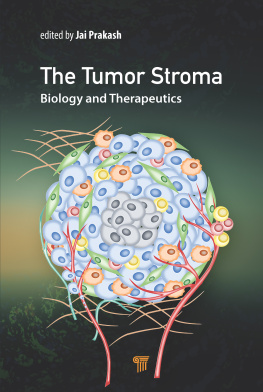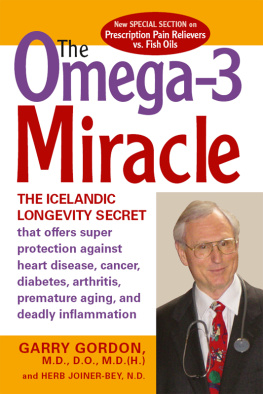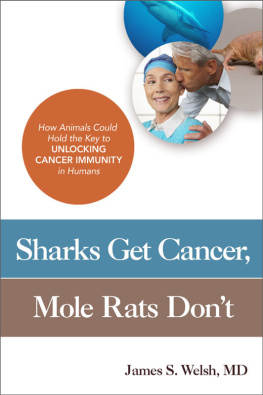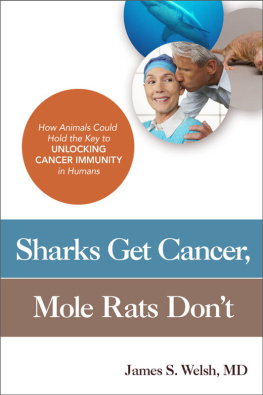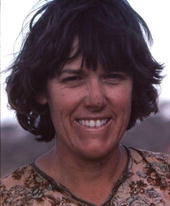Volume 1319
Advances in Experimental Medicine and Biology
Series Editors
Wim E. Crusio
Institut de Neurosciences Cognitives et Intgratives dAquitaine, CNRS and University of Bordeaux, Pessac Cedex, France
Haidong Dong
Departments of Urology and Immunology, Mayo Clinic, Rochester, MN, USA
Heinfried H. Radeke
Institute of Pharmacology & Toxicology, Clinic of the Goethe University Frankfurt Main, Frankfurt am Main, Hessen, Germany
Nima Rezaei
Research Center for Immunodeficiencies, Childrens Medical Center, Tehran University of Medical Sciences, Tehran, Iran
Junjie Xiao
Cardiac Regeneration and Ageing Lab, Institute of Cardiovascular Science, School of Life Science, Shanghai University, Shanghai, China
Advances in Experimental Medicine and Biology provides a platform for scientific contributions in the main disciplines of the biomedicine and the life sciences. This series publishes thematic volumes on contemporary research in the areas of microbiology, immunology, neurosciences, biochemistry, biomedical engineering, genetics, physiology, and cancer research. Covering emerging topics and techniques in basic and clinical science, it brings together clinicians and researchers from various fields.
Advances in Experimental Medicine and Biology has been publishing exceptional works in the field for over 40 years, and is indexed in SCOPUS, Medline (PubMed), Journal Citation Reports/Science Edition, Science Citation Index Expanded (SciSearch, Web of Science), EMBASE, BIOSIS, Reaxys, EMBiology, the Chemical Abstracts Service (CAS), and Pathway Studio.
2019 Impact Factor: 2.4505 Year Impact Factor: 2.324
More information about this series at http://www.springer.com/series/5584
Editors
Rochelle Buffenstein , Thomas J. Park and Melissa M. Holmes
The Extraordinary Biology of the Naked Mole-Rat
1st ed. 2021

Logo of the publisher
Editors
Rochelle Buffenstein
Calico Life Sciences LLC, South San Francisco, CA, USA
Thomas J. Park
Laboratory of Integrative Neuroscience Department of Biological Sciences, University of Illinois at Chicago, Chicago, IL, USA
Melissa M. Holmes
Department of Psychology, University of Toronto Mississauga, Mississauga, ON, Canada
ISSN 0065-2598 e-ISSN 2214-8019
Advances in Experimental Medicine and Biology
ISBN 978-3-030-65942-4 e-ISBN 978-3-030-65943-1
https://doi.org/10.1007/978-3-030-65943-1
Springer Nature Switzerland AG 2021
This work is subject to copyright. All rights are reserved by the Publisher, whether the whole or part of the material is concerned, specifically the rights of translation, reprinting, reuse of illustrations, recitation, broadcasting, reproduction on microfilms or in any other physical way, and transmission or information storage and retrieval, electronic adaptation, computer software, or by similar or dissimilar methodology now known or hereafter developed.
The use of general descriptive names, registered names, trademarks, service marks, etc. in this publication does not imply, even in the absence of a specific statement, that such names are exempt from the relevant protective laws and regulations and therefore free for general use.
The publisher, the authors and the editors are safe to assume that the advice and information in this book are believed to be true and accurate at the date of publication. Neither the publisher nor the authors or the editors give a warranty, expressed or implied, with respect to the material contained herein or for any errors or omissions that may have been made. The publisher remains neutral with regard to jurisdictional claims in published maps and institutional affiliations.
This Springer imprint is published by the registered company Springer Nature Switzerland AG
The registered company address is: Gewerbestrasse 11, 6330 Cham, Switzerland
To our mentors, students, colleagues, animal care takers, and families who over the years have encouraged and influenced our scientific endeavors. Your creativity, enthusiasm, and love of both challenging scientific questions and our extraordinary subterranean friends have been a source of inspiration to us all.
Foreword ~ A Brief History
Jennifer Jarvis in the field catching naked mole-rats in 1980. (Photo credit: Rochelle Buffenstein)
In 1882, Ernst Rppell described Heterocephalus , a new genus of rodents. The specimens had been collected in Sheo, Ethiopia, by Martin Bretska. Rppell apparently initially thought that because they lacked fur, they were juveniles of a haired adult. Only after more specimens had been collected by Captain Bottego it was realised that Heterocephlaus glaber was virtually hairless, except for a sparse scattering of stiff guard hairs and sensory vibrissae located mainly on the face and tail and fringing the toes and sides of the feet.
Other specimens of Heterocephalus were subsequently collected from many regions of Ethiopia, Somaliland and Kenya, and this generated a lively debate on their taxonomy, based largely on variations of body size and the number of molars. Several species and subspecies were proposed and even a second genus Fornarina until it was generally agreed to lump these all altogether. Field and laboratory studies primarily by my group have now established that body size in Heterocephalus, even within a single colony, is very variable and influenced by such factors as social status and harshness of their habitat.
Publications on Heterocephalus initially concentrated on their taxonomy, anatomy -using histological assessments of skin, gonads, and eyes as well as some physiology . Little was mentioned about behaviour and ecology, although Thomas, in 1903, reported that Dr. Dulio had observed that in Somalia naked mole-rats lived in colonies of 50100 individuals. The first comprehensive study in the field and laboratory was done by Osman Hill and his fellow workers in 1957. From their studies in the wild, they were the first to suggest that teamwork was involved in naked mole-rat digging activities. They observed that the animal involved in kicking out the excavated soil would do this for some time without a pause, indicating that other animals were likely supplying it with the soil. This was later verified by studies undertaken by my group both in captivity
and during a 6-week expedition in 1980. That expedition was sponsored by a grant obtained from the National Geographic Society. I was accompanied on that trip by three energetic and enthusiastic diggers, namely Rochelle Buffenstein, Kate Davies and Mike Griffin. That field trip confirmed a hunch that naked mole-rats were eusocial , living in social groups with a strict division of labour culminating in the presence of only one breeding female . These findings validated by behavioural studies undertaken at the University of Cape Town resulted in my Science paper that in many ways introduced the naked mole-rat to the general public. The captive colonies captured in Northern and Western Kenya in 1980 were then brought to the University of Cape Town and together with some individuals collected by me in the early 1960s and 1970s, formed the University of Cape Town colonies. These were used in wide-ranging additional research studies: Thermoregulatory and metabolic studies were initially undertaken by Philip Withers and Rochelle Buffenstein. Sher also focused on the impact of living in the dark on the sunshine hormone vitamin D and examined the effects of vitamin D deficiency on bone and mineral metabolism. She demonstrated that adult naked mole-rats had unfused growth plates in their vertebrae, facilitating the growth of the spine when females transitioned to dominant breeders. This growth, in particular that of the lumbar region enabled the mole-rat queens to carry larger litters without getting stuck in their burrow tunnels. My last Ph.D. student, Justin ORiain, expanded these studies and also identified another distinctive morphological caste, namely the disperser morph. Chris G. Faulkes showed that reproductive suppression was physiologically imposed in both subordinate males and females. Another of my Ph.D. students, Nigel Bennett, further extended the studies on eusociality to show that a haired relative, the Damara mole-rat, was also eusocial with very similar skew in lifetime reproductive success and reproductive physiology. Early genetic studies were undertaken by Rodney Honeycutt. Focus then shifted to ecological studies in the field mainly by Robert Brett and Stanton Braude, and additional behavioural studies undertaken in the laboratories of Dick Alexander, Paul Sherman and my own.


